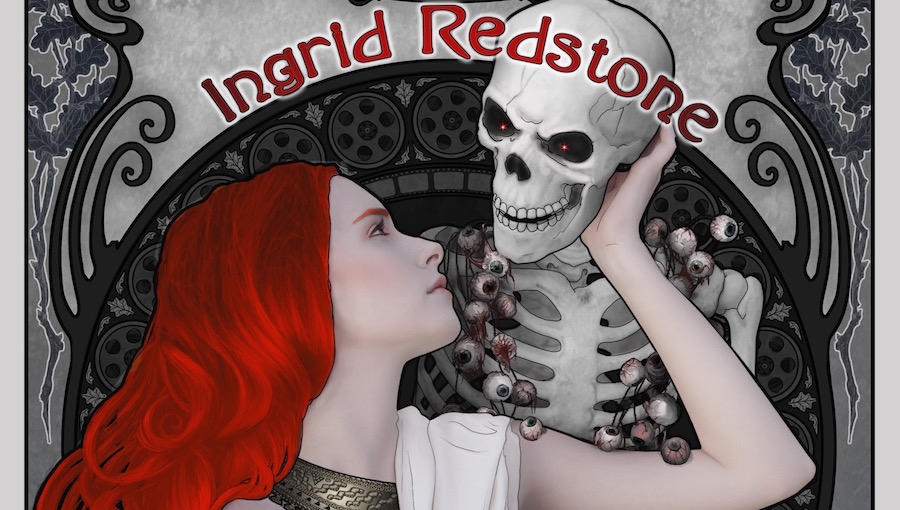secret history
noun
1. a version of historical events which differs from the official or commonly accepted record and purports to be the true version; Also called shadow history1
Known by secret, shadow, or revisionist history, this storytelling structure is often employed in science fiction, fantasy, spy thrillers, and historical accounts of events in history. Occasionally, the plots will use time travel as a way of retconning history for its own use. Literary examples of this narrative structure includes Ken Follett’s Eye of the Needle, Jo Nesbø’s The Redbreast, and Alexandre Dumas’ The Three Musketeers; however, one can easily look to Rowan Atkinson’s comedic television series, Blackadder, the Fallout video game franchise, Crisis on Infinite Earths (DC Comics), and, of course, The Man in the High Castle, adapted from Philip K. Dick’s 1962 novel. Intertwining historical facts and events into narrative fiction typically results in fascinating revisionist stories that explore alternative motivations by famous characters and true events. Los Angeles writer Sean Patrick Traver’s self-published Red Witch: The Tales of Ingrid Redstone is the latest entry to this narrative style.
Red Witch opens in 1910 with Ingrid Redstone in search of a large, ancient tree marking the location of the Hole in the Sky. A witch, a blossoming actress in early cinema, and seeker of obscure knowledge, Ingrid finds Mictlantecuhtli (nicknamed “Micky”) or the King of the Dead. Skeletal and wearing garlands of human eyes, Micky manifests his appearance as an Aztec king that is pleasing to Ingrid. In six episodic tales, the reader is taken on a whirlwind epic adventure with Ingrid as she travels into the distant past (laying a foundation of Aztec mythology) and then zooms back to the present (1910) before ricocheting between a number of 20th century landmark years, such as December 6, 1941, and December 31, 1999. Notably, Ingrid meets Walt Whitman, Alfred Hitchcock, Dottie Parker, Seabiscuit, and many other famous historical figures – look them up, they were real individuals (and horses)! Encountering some familiar faces in Death’s realm forces Ingrid to come to terms with past relationships, learning of the consequences of her actions and correcting her mistakes. And, as Death’s lover, Ingrid is at first confidently in control of their relationship, but over the course of the tales, she learns that her student has become a skillful master.
Author of Graves’ End: A Magical Thriller and the upcoming Wraith Ladies Who Lunch, Traver is no stranger to blending historical facts and fiction in his stories. In fact, as a life-long resident of Los Angeles and an employee at North Hollywood’s The Iliad Bookshop (a book lover’s mecca), Traver is something of a subject matter expert of local history and lore, as well as an avid collector of interesting factoids to be later revealed for the optimal effect in one of his stories. Readers should not mistake this self-published novel as inferior to the novels from familiar publishing houses; this is high caliber, skillful writing, on par with any of the other secret history stories mentioned above. One should not make the assumption that this will be a breezy (Read: fluff.) novel or that Death sparkles in either his skeletal or Aztec king personas. Rather, one will find that meticulous care has been taken to present a story that entertains and engages the reader on an emotional level. Although Death and the concept of death are explored, Red Witch is not all gloom and seriousness; there are delicious moments of light humor and fond references to popular culture icons and local locales.
High marks must be given to the visual aesthetics of Red Witch – in other words: the cover, interior accents, and font choice. One of the delights of this novel is the cover. Catherine P. Langwagen completed the cover using model Brett Hargrave and photography by Jay Holben. Ingrid and Death are posed in a particular way eluding to an important beat in the story (Sorry, you’ll have to read the book to find out.), and they are surrounded by relevant story elements – tree leaves, film canisters, Aztec jewelry and pyramid, and the Hollywood skyline. Traver’s font choice is reminiscent of the Art Nouveau style that was popular in the 20th century, and the miniature icons – pyramid, tree, and tall building – at the beginning of each episode is a nice touch to the visual presentation and re-enforces story ques.
Red Witch is part secret history, part hero’s journey, part time travel, part horror, and part love story. In a scene that sounds like the introduction to a joke – “Did you hear the one about a redhead in blue jeans meeting a bare-chested Aztec king in a London pub called the Cock & Bull?” – Traver skillfully weaves together history and fiction in an absorbing, entertaining story. Red Witch is worthwhile and worthy of your time. And, remember to fasten your seat belts!
Book cover image provided by Sean Patrick Traver.
Footnotes
1. Definition from Dictionary.com

